Low power heating pumps. Circulation pumps for water supply
In order for the corresponding water to flow immediately when the hot water supply tap is opened, it is necessary to create a closed DHW circuit and equip it with a liquid pumping device. How to make the right selection of a circulation pump for hot water in the house? This and the feasibility of constructing a closed DHW system will be discussed in the article.
Why do you need to loop pipes with hot water?
It makes sense to do a closed DHW circuit not everywhere, but only in large private houses (cottages), where a storage-type heating device is located far from water intake points. What happens in a similar situation when you open a hot tap? It takes several seconds (and sometimes tens of them) to drain the water that has cooled in the pipes in anticipation of the hot water that flows from the boiler during this period. Even if we do not take into account a certain volume of liquid released into the sewer for no benefit (sometimes up to 5 liters), everyone will agree that it is extremely inconvenient to expect water of the right temperature from the tap.
In order not to languish in anticipation of hot water every time, lowering cold water into the sewer, an improvement in the DHW system should be made. What is it? A closed circuit is created, where, in addition to the pipeline, a boiler and a circulation pump enter. The latter drives the liquid through the pipes and through the heater, so that at each hot tap at any time the water is almost the same temperature as in the boiler.
What gives such a hot water supply system besides comfort? In practical terms, significant water savings and a small amount of electricity required to operate a low-power pump. Why small? Because for the circulation of water through closed DHW pipes, a large pump power is simply not needed, therefore, for such purposes, manufacturers produce special circulating devices that differ (if we compare their description with similar equipment for heating systems) with low power, therefore, with insignificant electricity consumption.
Important! At some specialized forums, consumer interest in circulation pumps powered by 12 volt power supplies is monitored. This is due to the ability of these devices to work during a power outage. On sale you can find pumps operating from a 12 volt current source, however, neither for heating nor for circulating hot water. household water they are not suitable for pipes. After reading their descriptions and reviews, it becomes clear that these are unreliable products of dubious quality.
What pumps are needed for hot water systems?
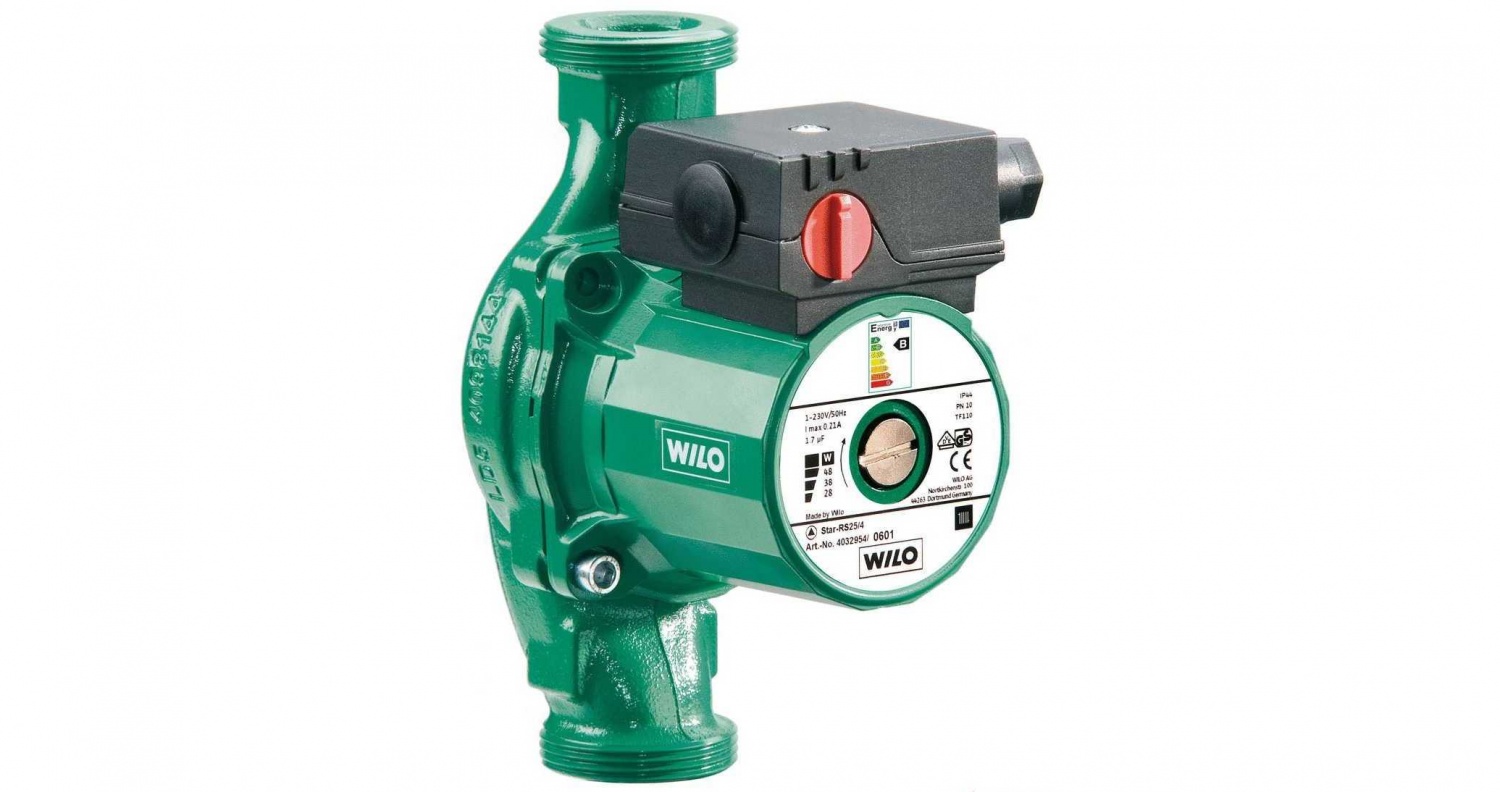
Now many well-known manufacturers produce specialized pumping devices for a closed hot water supply system. What are the features of such equipment? The technical characteristics of DHW circulation pumps (they can be found in the description for each product on the websites of the selling organizations) differ from similar devices intended for the heating system in the following parameters:
- pressure;
- performance;
- power consumption;
- automatic control system.
Head characterizes the ability of any pumping equipment to push fluid with a certain force. This indicator is measured in meters of water column. Let's say if in the description specifications the pump head is 3 meters, which means that the device is able to raise the water in the pipe to such a height.
When selecting pumping equipment for this parameter, the resistance of the pipe circuit is taken into account. The greater the resistance, the greater the pressure must be to overcome it.
In a closed DHW system, the resistance in the path of a moving fluid is negligible, so a low-power circulation pump is needed here. The pressure indicator in such devices ranges from 1.2-3.5 m. The fact is that the task of the device in a circuit with hot water is only the distillation of the liquid in a circle so that it does not cool. The pressure at the outlet of the taps is provided by a pump (or pumping station), which pumps water into the house's water supply system, including the boiler.
The performance (flow rate) of any pumping equipment determines the amount (volume) of liquid that the device can pump per unit of time. This parameter for DHW circulation pumps also needs a minimum. If we assume that the closed circuit in a two-story cottage does not exceed 100 m in length, and there is 0.2 m3 of liquid in one meter of a half-inch pipe, then the entire pipe system (not counting the water heater) contains only 20 m3 of water. In order to carry out recirculation every 3 minutes (this is enough for the liquid not to cool down), you will need a device capacity of 20x20 \u003d 400 liters per hour.
This calculation of the circulation pump shows that the device will need a low-power one, and therefore the consumption of electricity required for its operation will also be minimal, which is confirmed by the descriptions of the technical characteristics of such products. The power consumption of such products is in the range of 30-40 W / h. Considering that the device does not work constantly, but only when necessary, it becomes clear that the DHW circulation pump is unlikely to be able to significantly affect the bills for the electricity used.
"Smart" pumps

Leading manufacturers of pumping equipment for hot water supply, such as Grundfos, Vilo, Vortex, DAB, equip devices with control systems that allow you to achieve optimal operation, further reducing energy consumption. Thermostats, timers are used, as well as an innovative auto-tuning system, when the circulation pump itself “gets used” to a certain, daily repeating on / off mode. Working with such equipment with "smart" automation for only 3-4 hours a day in total, the circulation pump spends only 100-150 W of electricity, but at the same time, when any hot water tap is opened, hot water immediately flows.
Important! To solve the issue of uninterrupted operation of the circulation pump during a possible power outage, experts and home craftsmen advise not to look for 12 volt devices, but to do the opposite - connect an ordinary 220 volt pump to a 12 volt power supply through an inverter. For continuous operation, this method is not suitable (a 12-volt battery runs out quickly), but at times of a 220-volt power outage (in the mains), it is quite possible to power the circulation pump from a 12-volt battery.
Low-power water pumps are a type of submersible, surface models of units used for pumping liquids. They are used in water supply, sewerage and drainage works at dachas and suburban farms, as well as in small-scale production. The main advantage is power up to 400 W, appreciated by economical owners. Such units are able to work from generators and at the same time perform all the tasks assigned to them.
Features of devices with low power
Having small capacities, the units do an excellent job with such functions as:
- pumping liquids from storage tanks for watering the garden;
- supply flows from shallow wells / wells to provide water supply to small houses;
- equalization / pressure increase in the networks of the internal plumbing structure;
- pumping out dirty water, but some feature of the characteristics is required here.
Low power does not mean that water pumps have reduced performance. You should not expect strong pressure and pressure, as well as water supply to several distribution points, but for a small house such devices are quite suitable. Another advantage of such units is their small size. The compactness of the models has led to the popularity of water pumps among a large number of users, and despite the fact that low power does not respond to performance, the units are worthy of the widest range of applications. Therefore, it is worth considering all types of mini-devices separately.
Important! When choosing a unit whose dimensions do not exceed 30 * 20 cm, it is important to pay attention to the depth of water supply, as well as the distance to the end point of distribution. If the indicators in the device passport correspond to the calculations, you can neglect expensive models and get by with a water pump of small format and power, but sufficient performance.
Vibratory pumps
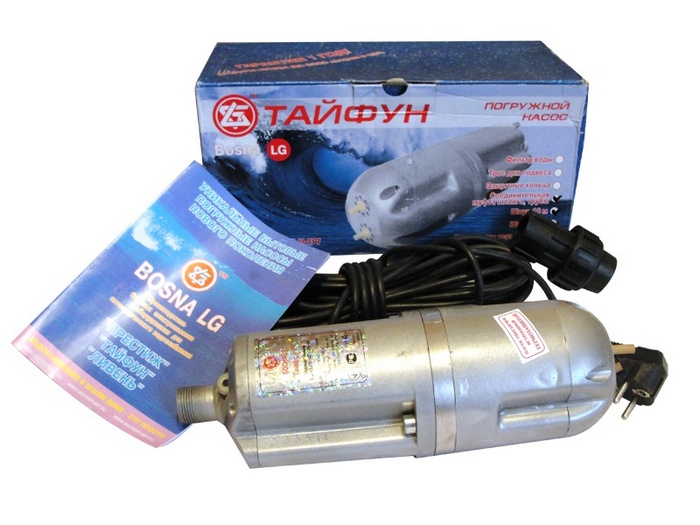
Vibrating type water structures have such advantages as small size and affordable cost. The average power affects productivity, which does not prevent models like the Kid from coping well with the water supply of houses. The extremely simple principle of operation, the ability to connect to a conventional outlet without the need for grounding, as well as sufficient pressure, make it possible to use a water pump to pump water from medium-sized depths.
As a rule, vibration units have a submersible type of use, and small dimensions are a plus here. During operation, the devices are naturally cooled, which minimizes the risk of overheating. The best models for household needs are the products of the Malysh line: 10M, BV-0, 25.
Centrifugal pumping units
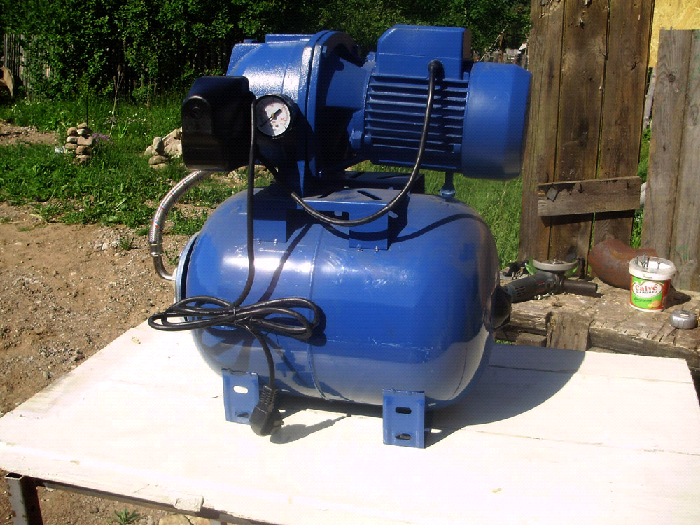
Unlike vibration, units are of surface and submersible type. The efficiency of centrifugal water pumps is immeasurably higher due to the design features of the motor. Universal low-power devices are able to cope with the domestic and watering needs of a country mansion or cottage. At the same time, the units are connected to a regular outlet, placed in wells of small diameter and pump water over a distance of 10-15 meters.
Drainage pumps
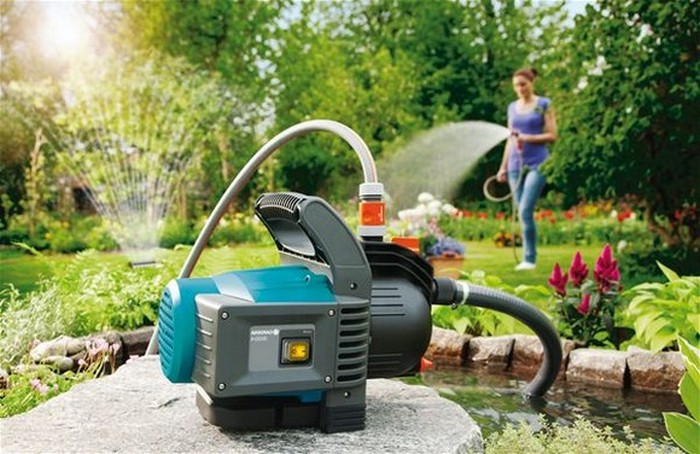
Not much different from submersible equipment, drainage-type water pumps are used to pump out excess accumulations of liquid and dirty water when cleaning wells, wells, and tanks. Therefore, all models have a design of increased wear resistance, non-susceptibility to aggressive environments and are small in size. Low power appliances are the most suitable for domestic needs:
- miniaturization of devices;
- saving energy consumption;
- high practical characteristics;
- maintainability;
- affordable price.
All indicators meet the requirements of the user. And if we add to this the possibility of pumping streams with a strong share of pollution, then the popularity of the range of Malysh brand models becomes clear. At the same time, the units are connected to a 220 V socket and fit perfectly in the most limited spaces. An additional plus is that the devices can be equipped with a float design, which minimizes the possibility of damage to the unit.
Circulation pumps of small capacities
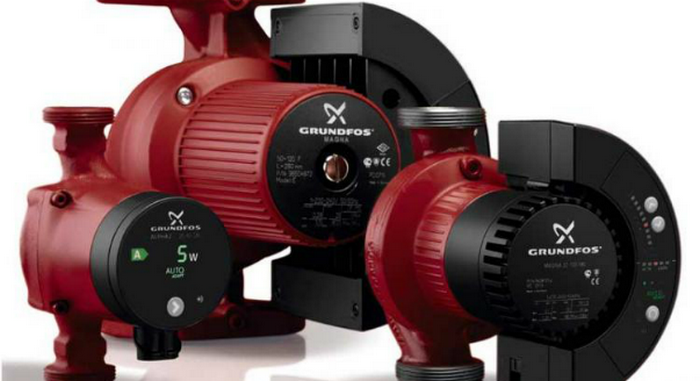
The units are installed directly on the pipeline, so low weight and dimensions are an indispensable condition for the models. A circulation type water pump is indicated for use in pressurizing a closed pipeline network.
The installation is recommended in private houses, the level of pressure in the network of which does not allow the coolant to function with full efficiency. It is also possible to mount devices in autonomous water supply systems, where it is necessary to increase the pressure at the outlet of the hydraulic tank or filter element. The standard indicators of devices are 12-24 volts, dimensions 7 * 7 cm, connection to a 220 V outlet. A small power will ensure a smooth pressure build-up, which is necessary for users - a clear plus in favor of choosing low-power water pumps.
Reduced capacity pumping stations

Important! A water supply station, where a low-power water pump is located, is an ideal device for providing an autonomous water supply system for a private house. Equipped with additional functionality, the station is completely ready for operation and is mounted without the use of special tools and skills.
With all the advantages of serious installations, low-power pumping station has compact dimensions and is good for wells punched in the house. Having several units, including a centrifugal-type water pump, a filtering unit, a device for increasing the outlet pressure and a storage accumulator, the unit serves both for pumping flows and for a certain supply of clean drinking water.
The autonomy of the device, low energy consumption, the ability to connect to a 220 V socket, as well as automatic control all processes determined the popularity of this unit for water supply. It is worth remembering that the installation of the station must take place in a heated room, or the device requires conservation / insulation in the winter.
When choosing a pump for water of reduced power, one should not assume a decrease in its performance. The right set of functions allow pumping equipment to perfectly cope with all cycles of work and at the same time take up much less space than standard devices. In addition, such models are much cheaper, which means that choosing a pump for water in the country can save a lot of money.
If you are building a modern Vacation home, then you cannot do without modern heat supply at home and in this case you need at least one circulation pump. We invite you to familiarize yourself with the functions of these devices and get acquainted with the places of their application.
The circulation pump for the heating system is an important element of the heat supply system.
For owners country houses, this device is the best option for maintaining heat in your home. In order for the premises to have a normal temperature, it is necessary to have not only a water heater and batteries with pipes, but also a number of devices and devices. One of the indispensable devices circulation pump for heating, which is the main component of the heating system and promotes the circulation of hot water in the system. The circulation pump is a small device that is installed in the pipeline and ensures the movement of the coolant through it.The increase in heat transfer is affected by the circulation of liquid in a closed circuit. The advantages of the circulation pump are keeping the same hot water temperature, low energy consumption, reliability, low noise and easy operation. The use of this device contributes to the constant supply of hot water and the removal of cooled water to the water heater.
When choosing a device, it must be taken into account that circulation pumps are oriented to systems with a stable fluid flow. Depending on the need, the pumps can regulate the water supply. Circulation pumps for heating systems are used in large industrial systems, radiator and geothermal heating systems, for hot water supply of apartments and houses, in "warm floors". The main purpose of circulation pumps is to overcome the resistance of pipes. Thanks to the operation of the device, the coolant moves in the system at a certain speed, which ensures efficient heat transfer and uniform heating of the radiators.
Circulation pump for heating contributes to energy savings due to automatic maintenance of the temperature, which is set by a special regulator. When the regulator is moved to the desired temperature, the pump will provide such a temperature in the radiators of the house in a short period of time.
The structure of the circulation pump is clear and simple. That is why this product is becoming increasingly popular. Without spending time and effort, you can install this device yourself or with the help of a plumber.
Circulation pumps are divided into two types - a device with a "wet" and "dry" rotor. The first type has been used for sixty years. In this type, the impeller and rotor are placed in the pumped liquid. Pumps of this type operate silently, are durable and reliable. A wet rotor circulation pump has a slightly lower efficiency than a dry rotor circulation pump, but this is offset by the higher wear resistance of a circulation pump with wet rotor. They are used in small heating systems.
In pumps with a "dry" rotor, there is no contact with the coolant. Their use is necessary in the implementation of the circulation of water of large volumes. This type of pump has a higher efficiency than their counterpart.
Circulation pumps perform important functions. Proper use of these devices will allow you to avoid unnecessary problems and enjoy the warmth and comfort in the room.
